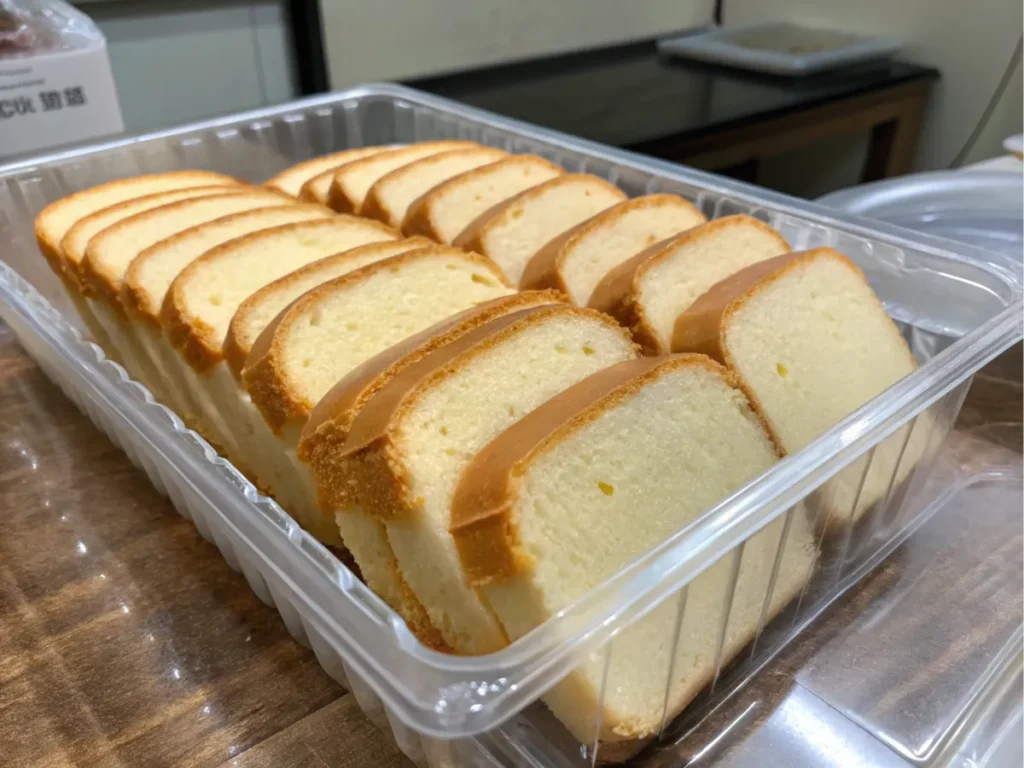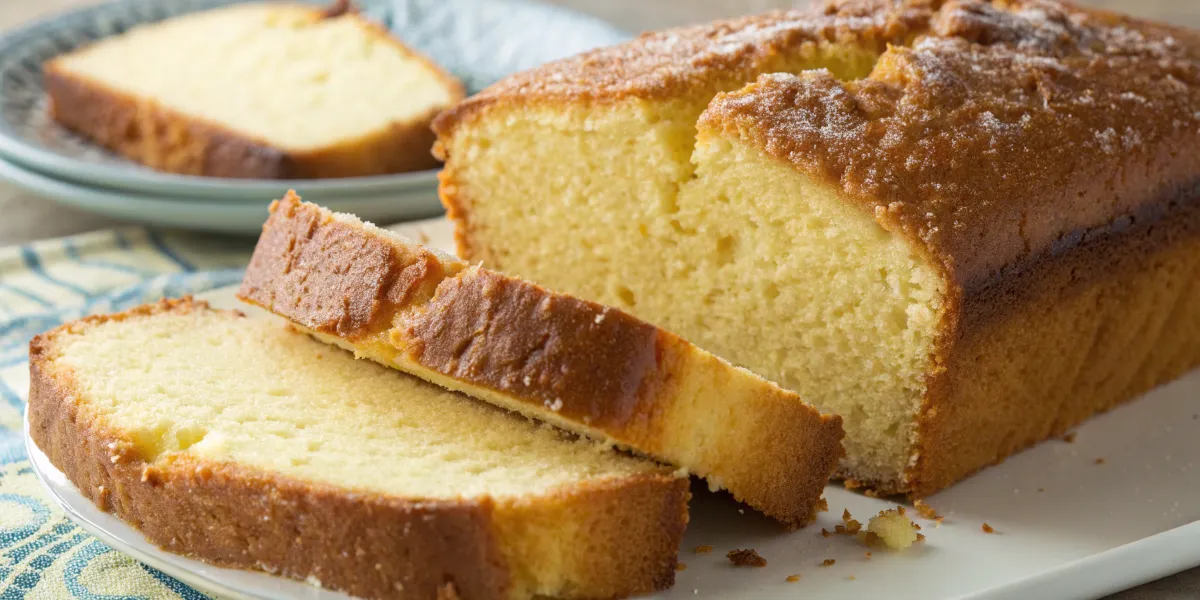Pound cakes appeal to many due to their rich, buttery flavor and moist, soft texture. However, not every baking attempt succeeds. Sometimes, instead of a tender cake, you end up with a dry, crumbly one. As a result , understanding what makes a pound cake turn out dry helps to avoid future disappointment. In this guide, we dive into what causes dryness in pound cakes and how to prevent it. Ultimately , with these tips, your pound cakes will turn out perfect every time.
Table of Contents
- Why Does a Pound Cake Turn Out Dry?
- Overmixing the Batter
- Incorrect Ingredient Ratios
- Baking Time and Temperature
- Skipping Room-Temperature Ingredients
- Ingredients for a Moist Pound Cake
- Step-by-Step Instructions for a Perfect Pound Cake
- Tips to Keep Your Pound Cake Moist
- Pro Tips & Variations
- FAQs: Troubleshooting Common Issues
- Conclusion
Why Does a Pound Cake Turn Out Dry?
A dry pound cake often results from small, avoidable mistakes. For instance , by understanding these common errors, you can bake with confidence and consistency.
1. Overmixing the Batter
One of the most frequent causes of dryness is overmixing. When you mix the batter too much, it activates gluten in the flour. Consequently , this can make the cake dense and dry instead of soft and tender.
Solution:
Mix only until the ingredients are combined. A folding motion works best when adding dry ingredients to wet ones. In addition , this method keeps the batter light and airy.
Example Tip:
If using a mixer, keep it on low speed when combining flour to prevent overmixing. Furthermore , stop as soon as no streaks of flour remain.
Pro Tip: Avoid overmixing by hand-mixing the final stages of the batter to maintain control.
2. Incorrect Ingredient Ratios
The balance of ingredients is critical. Too much flour or not enough butter and eggs will make the cake dry. Similarly , measuring errors, especially with flour, can easily upset this balance.
Solution:
Use a kitchen scale for precise measurements. Alternatively , if you don’t have one, spoon the flour into the measuring cup and level it off with a knife. Thus , never scoop directly from the bag to avoid inaccuracies.
Pro Tip:
A good ratio to remember is one part butter to one part sugar and flour. Accordingly , sticking to this balance helps keep your cake moist.
3. Baking Time and Temperature
Overbaking is another major cause of dryness. Even though a few extra minutes might seem minor, they can remove essential moisture. Likewise , an oven that runs hot can bake the outside too quickly, leaving the interior dry or uneven.
Solution:
Always check your oven temperature with an oven thermometer. Moreover , set a timer to check the cake 5–10 minutes before the recommended baking time ends.
Tip for Beginners:
Press lightly on the top of the cake; if it springs back, it’s done. On the other hand , insert a toothpick—if it comes out clean, your cake is ready. Consequently , these methods ensure perfect timing.
4. Skipping Room-Temperature Ingredients
Cold ingredients don’t blend smoothly, which can lead to uneven batter. As a result , this creates dry spots in the cake and can impact the overall texture.
Solution:
Bring butter, eggs, and milk to room temperature before starting. Let them sit out for at least 30 minutes. Additionally , softened butter creams more easily with sugar, trapping air for a lighter texture.
Ingredients for a Moist Pound Cake
The foundation of a great pound cake is the right ingredients in the right amounts. Accordingly, here’s a detailed ingredient list to guide you:
| Ingredient | Amount | Notes |
|---|---|---|
| Butter | 1 cup | Use unsalted and soften at room temperature. |
| Sugar | 2 cups | Granulated sugar is best. |
| Eggs | 5 large | Bring them to room temperature. |
| All-purpose flour | 3 cups | Sift to avoid lumps. |
| Baking powder | 1 tsp | Adds lightness to the cake. |
| Milk | 1 cup | Whole milk gives a richer flavor. |
| Vanilla extract | 2 tsp | Enhances the overall taste. |
Step-by-Step Instructions for a Perfect Pound Cake
These easy-to-follow steps help you bake a delicious, moist pound cake every time.
Bake the Cake
Pour the batter into the prepared pan and smooth the top. Afterward , bake for 60–75 minutes. Accordingly , test for doneness by inserting a toothpick—it should come out clean or with a few crumbs.
Prepare the Pan
Grease your pan thoroughly. For example , use butter or nonstick spray, and lightly dust with flour to prevent sticking. Subsequently , this step ensures the cake releases easily after baking.
Preheat the Oven
Preheat your oven to 350°F (175°C). Undoubtedly , a properly preheated oven is essential for even baking.
Cream Butter and Sugar
Beat the butter and sugar together until the mixture becomes light and fluffy. Consequently , this step traps air in the batter, which helps the cake rise.Tip: Use a stand mixer or hand mixer on medium speed for about 3–5 minutes for the best results.
Add Eggs One at a Time
Add the eggs one at a time, mixing well after each addition. As a result , this ensures the batter remains smooth and prevents curdling.
Combine Dry Ingredients
Mix the flour and baking powder in a separate bowl. Additionally , sifting the dry ingredients adds air, which creates a lighter cake.
Alternate Wet and Dry Ingredients
Gradually add the flour mixture and milk to the batter, starting and ending with the flour. Furthermore , mix on low speed or by hand to avoid overmixing.
Add Vanilla Extract
Stir in the vanilla extract gently. Thus , this adds a delicious depth of flavor to your cake.
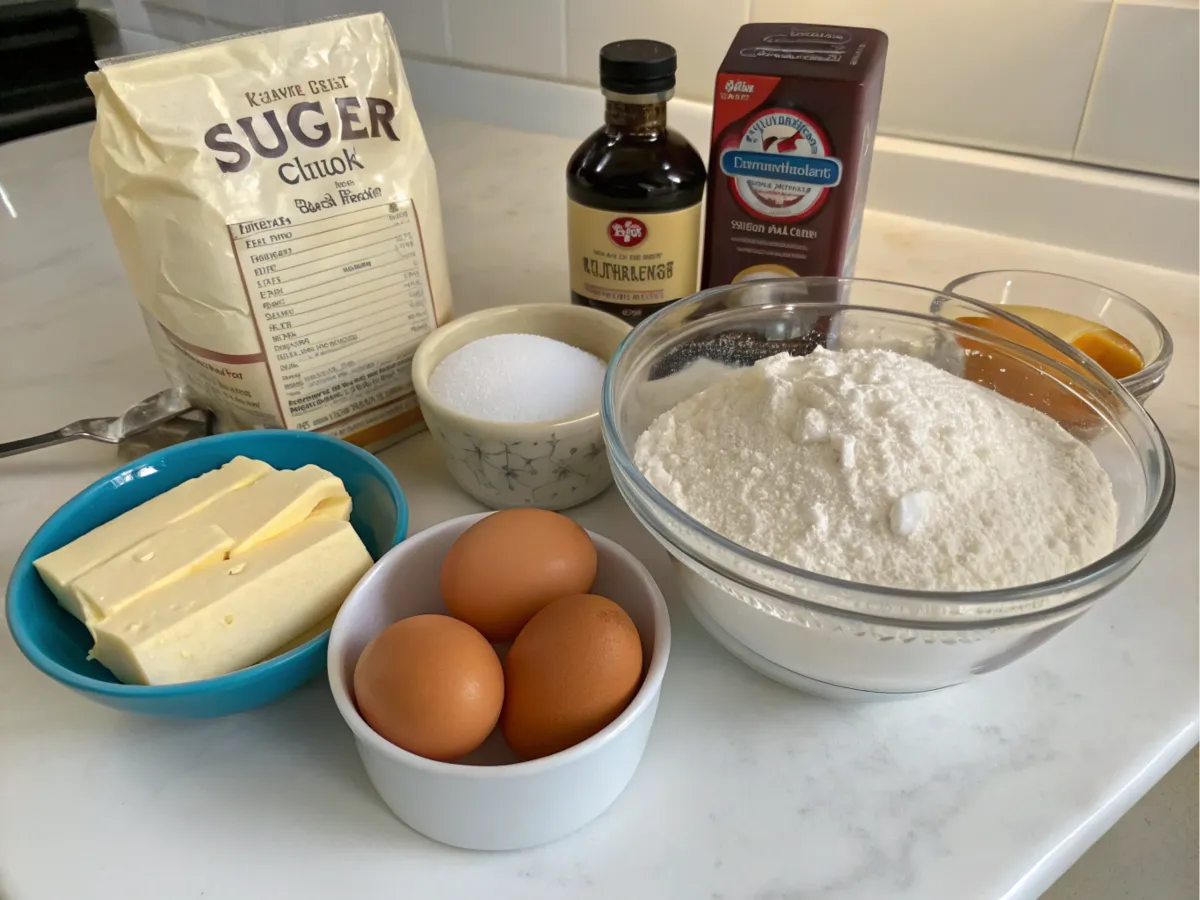
Tips to Keep Your Pound Cake Moist
Even the best recipes need a little extra care to ensure the cake stays moist. Here are practical tips:
- Use High-Quality Ingredients: Real butter, fresh eggs, and whole milk make a noticeable difference. These ingredients add richness and improve texture.
- Avoid Overbaking: Monitor the cake closely during the last 10 minutes of baking. Check early to avoid drying it out.
- Proper Storage: Allow the cake to cool completely before wrapping it tightly in plastic wrap or storing it in an airtight container. This keeps it from losing moisture.
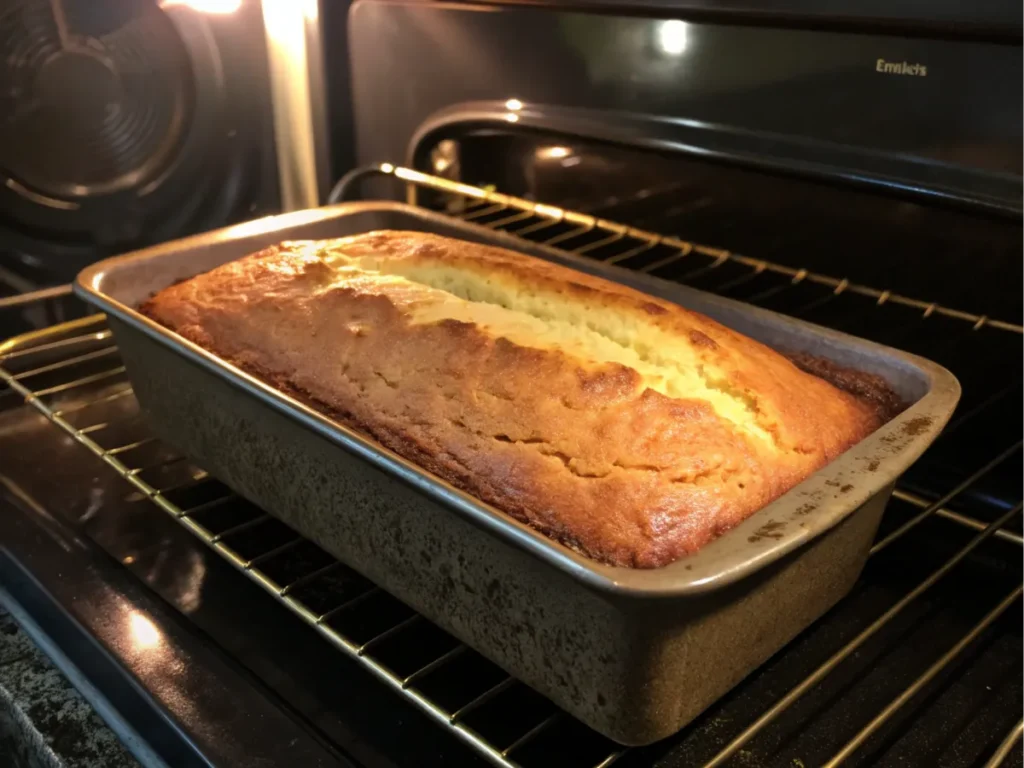
Pro Tips & Variations
Making the perfect pound cake involves more than just following a recipe. Small tweaks and creative ideas can elevate a simple cake into something extraordinary. Let’s dive into expert tips and some exciting variations.
Pro Tips for Moist and Delicious Pound Cake
- Measure Precisely
Precise measurements are crucial in baking. Even a little extra flour can make the cake dry. Always use a scale for accurate results. Spoon and level your flour rather than scooping directly from the bag. - Prep the Pan Thoroughly
Grease your pan well, especially if using a bundt pan. Pay attention to corners and crevices to prevent sticking. A dusting of flour after greasing adds extra insurance for a smooth release. - Room-Temperature Ingredients Work Best
Cold ingredients don’t mix well. Let your butter, eggs, and milk sit at room temperature before starting. This ensures a smooth batter and even baking. - Brush with Simple Syrup
A quick way to rescue a dry cake is brushing it with simple syrup. Combine equal parts sugar and water, simmer until dissolved, and brush over the cooled cake. - Check Doneness Early
Avoid overbaking by checking the cake 5-10 minutes before the suggested time. Insert a toothpick into the center; if it comes out clean or with a few crumbs, it’s ready.
Practical Tip: Always preheat your oven and use an oven thermometer to ensure it’s at the right temperature.
Creative Variations to Try
Pound cake is incredibly versatile. Adding flavors or mix-ins can transform this classic dessert into something special.
- Lemon Pound Cake: Add zest from two lemons and two tablespoons of lemon juice for a bright, tangy flavor. Drizzle a simple lemon glaze over the top for extra flair.
- Chocolate Marble Pound Cake: Swirl melted chocolate or cocoa powder into part of the batter before baking. This creates a stunning visual effect and rich chocolatey flavor.
- Seasonal Fruit Additions: Fold in fresh berries like blueberries, strawberries, or raspberries. Toss the fruit in a little flour first to prevent it from sinking during baking.
- Nutty Variations: Stir in chopped pecans or walnuts for added texture and a nutty richness. Toast the nuts beforehand to enhance their flavor.
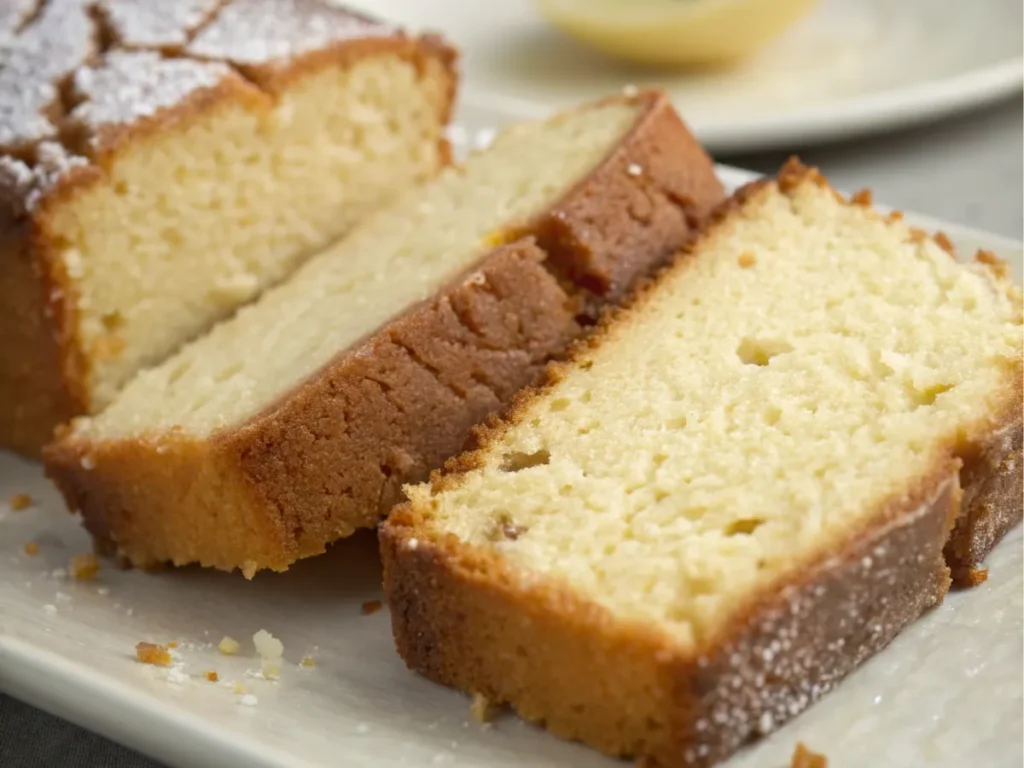
Learn more about baking techniques in our privacy policy section.
FAQs: Troubleshooting Common Issues
Even the best bakers encounter challenges. Below are answers to common questions that will help you troubleshoot your pound cake problems.
How do you keep a pound cake from drying out?
Keeping a pound cake moist begins with storage. Let the cake cool completely, then wrap it tightly in plastic wrap or place it in an airtight container. Additionally , brushing the cake with simple syrup before storage adds extra moisture and enhances flavor.
Why did my pound cake come out dry?
A dry pound cake is often caused by overbaking or too much flour. Be sure to measure flour correctly and check the cake for doneness early. Also , mixing the batter too much can develop gluten, making the cake denser and drier.
Why is my pound cake still wet in the middle?
If your cake is wet in the center, it might not have baked long enough. Uneven oven temperatures can also be the culprit. Use an oven thermometer to verify the heat. Finally , always test the cake with a toothpick to ensure the middle is cooked.
Can you fix a dry pound cake?
Absolutely! A simple syrup can work wonders on a dry cake. Brush it on while the cake is still slightly warm. Alternatively , pairing the cake with whipped cream, fresh fruit, or ice cream can also help balance the texture.

Explore our tips for better baking results in our about section.
Conclusion
Baking the perfect pound cake takes patience and attention to detail. By avoiding common mistakes and applying expert tips, you can consistently create a cake that is moist, tender, and bursting with flavor. Don’t hesitate to experiment with variations like lemon glaze or seasonal fruits to make each cake unique. Whether you’re baking for family or friends, these strategies will ensure your pound cakes impress every time.
